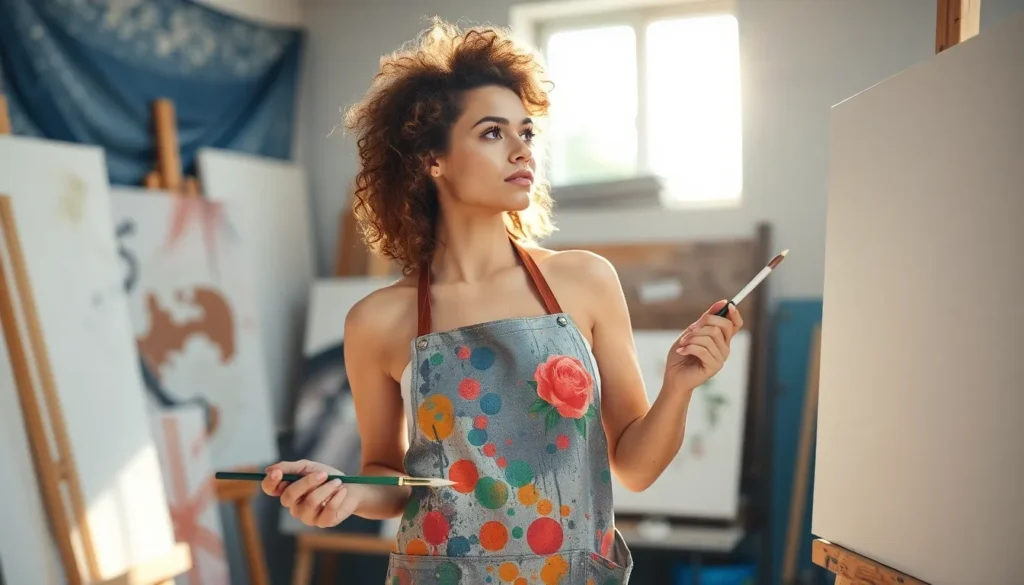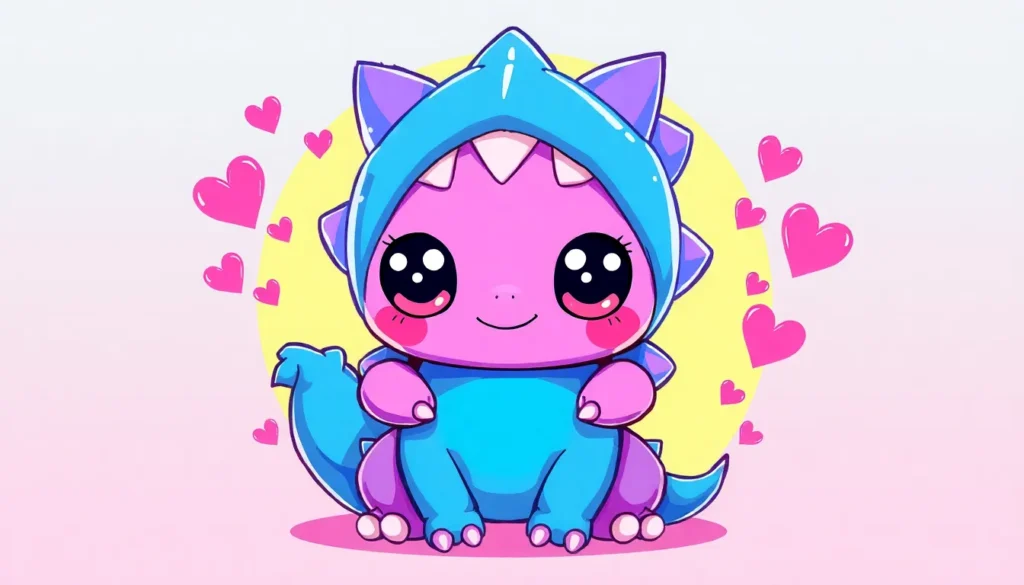Table of Contents
ToggleIn a world where creativity often feels like a fleeting butterfly, setting creative goals can be the net that captures it. Forget the boring resolutions that fizzle out by February. It’s time to spice things up and make your creative journey a thrilling adventure. Whether you’re a painter, writer, or even a professional cat video creator, having clear goals can transform your wild ideas into tangible masterpieces.
Imagine waking up every day with a roadmap to your creative success, one that not only guides you but also makes you chuckle at the absurdity of your lofty ambitions. Setting creative goals isn’t just about the destination; it’s about enjoying the ride, dodging the potholes, and maybe even stopping for ice cream along the way. Let’s dive into the art of goal-setting and unleash the creative genius lurking inside.
Understanding Creative Goals
Creative goals capture the essence of one’s imagination. These goals serve as guiding stars that illuminate the path toward innovative pursuits.
Definition of Creative Goals
Creative goals represent specific, measurable objectives focused on artistic or inventive outputs. They encourage individuals to channel their ideas into tangible results. Setting these goals might involve completing a painting, writing a novel, or launching a unique project. By defining what success looks like, individuals establish a roadmap leading to fulfillment.
Importance of Setting Creative Goals
Establishing creative goals enhances productivity and fosters a sense of direction. Individuals benefit from having clear targets that motivate and inspire them to push boundaries. Measurable goals make it easier to track progress, transforming abstract concepts into achievable realities. Moreover, creative goals help individuals navigate challenges, providing a framework for overcoming obstacles. Pursuing these targets nurtures creativity and boosts self-confidence, making the artistic journey both rewarding and enjoyable.
Types of Creative Goals

Creative goals come in various forms, each with unique benefits and applications. Understanding these types helps individuals tailor their objectives to suit their unique creative journeys.
Short-Term vs. Long-Term Goals
Short-term goals focus on immediate, achievable outcomes. They often encompass tasks that can be completed in days or weeks, like finishing a poem or completing a small painting. Long-term goals, on the other hand, require a broader vision, often taking months or years to achieve. Examples include writing a novel or launching a full creative project. Setting both types provides a balanced approach, enabling individuals to celebrate small victories while working toward larger aspirations.
Personal vs. Professional Goals
Personal goals emphasize self-exploration and growth. These goals may include developing a new skill, such as mastering photography techniques or exploring different writing styles. Professional goals connect to career advancement, focusing on specific achievements that enhance job performance. Objectives like creating a portfolio or producing a series of videos fall under this category. Distinguishing between these goals ensures a comprehensive strategy that nourishes both personal satisfaction and professional success.
Techniques for Setting Creative Goals
Creative goal-setting requires effective techniques to maximize potential. Utilizing structured frameworks enhances focus and clarity.
SMART Goals Framework
Applying the SMART framework helps individuals set clear creative goals. These goals must be Specific, Measurable, Achievable, Relevant, and Time-bound. Specific goals provide clarity on what to pursue. Measurable objectives allow tracking progress effectively. Achievable targets ensure individuals don’t overcommit, fostering motivation. Relevant goals align with one’s broader creative vision, and time-bound deadlines create urgency. For example, an artist could aim to complete a painting within two weeks, making the goal both clear and actionable.
Visualization and Ideation Techniques
Incorporating visualization techniques enhances creative goal-setting. Visualizing desired outcomes fuels inspiration and commitment. Artists, writers, and creators can create mood boards or sketches to represent their ideas tangibly. Techniques such as brainstorming encourage the free flow of ideas without judgment. Engaging in mind mapping organizes thoughts around a central theme, showcasing pathways toward the creative goal. For instance, a writer might visualize the chapter outline of a novel, fostering clarity on structure and narrative flow.
Overcoming Challenges in Creative Goal Setting
Challenges often arise during the pursuit of creative goals. Identifying and addressing these hurdles is crucial for maintaining progress and fostering creativity.
Common Obstacles
Creative individuals encounter several common obstacles in goal setting. Fear of failure frequently inhibits risk-taking, causing self-doubt to linger. Time constraints can hinder the creative process, leaving little room for experimentation. Additionally, perfectionism creates unrealistic expectations, stifling creativity and discouraging completion. Distractions from external commitments pull attention away from artistic endeavors. Finally, lack of resources—whether materials or support—can significantly impact a creator’s ability to achieve their goals. Acknowledging these obstacles allows for more effective strategies to overcome them.
Strategies to Stay Motivated
Staying motivated amid challenges requires intentional strategies. Setting smaller, manageable milestones helps track progress and maintains enthusiasm. Building a support network encourages accountability and provides fresh perspectives. Incorporating regular reviews of achievements fosters reflection and satisfaction, reinforcing commitment. Engaging in diverse creative activities can stimulate inspiration and prevent burnout. Adopting a flexible mindset embraces experimentation, allowing for adjustments along the creative journey. Celebrating accomplishments, no matter how small, cultivates positivity and drives motivation forward.
Setting creative goals is a powerful way to ignite passion and drive in any artistic endeavor. By defining clear objectives individuals can navigate their creative paths with purpose and inspiration. Embracing both short-term and long-term goals allows for a balanced approach that nurtures personal growth and professional development.
Utilizing techniques like the SMART framework and visualization can transform abstract ideas into actionable plans. Overcoming challenges along the way is essential for maintaining momentum and enthusiasm. Ultimately, the journey of pursuing creative goals enriches not only the creative process but also the individual’s confidence and satisfaction in their work.




